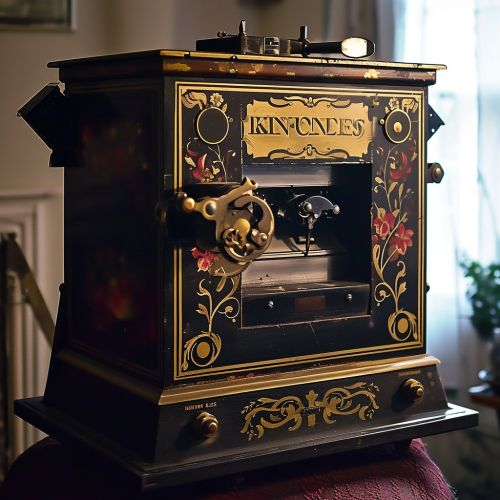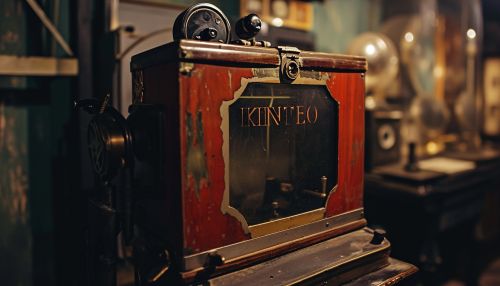Kinetoscope
Introduction
The Kinetoscope is an early motion picture exhibition device. It was designed for films to be viewed by one individual at a time through a peephole viewer window at the top of the device. The Kinetoscope was not a movie projector, but introduced the basic approach that would become the standard for all cinematic projection before the advent of video.


History
The Kinetoscope was invented by Thomas Edison's assistant, William Kennedy Laurie Dickson, who was given the task of creating the motion picture camera. The concept was developed from a series of inventions, patents and corporate espionage. It was the first practical photographic device to capture a sequence of high-speed images in real-time.
Design and Mechanism
The Kinetoscope was a wooden cabinet containing a strip of film that was moved by sprockets and an electric motor. The film was lit by an incandescent lamp, and the viewer would look through the peephole to see the images. The film strip, which was about 13 meters long and showed a sequence of images at a speed of about 46 images per second, was looped around a series of spindles inside the cabinet.
Impact and Legacy
The Kinetoscope had a significant impact on the development of cinema. It was the first device to show moving pictures and paved the way for the development of the movie projector. The Kinetoscope also influenced the design of later film viewing devices and set the stage for the development of the film industry.
